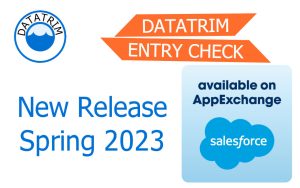Make Lead deduplication an integral part of your Lead qualification process.
With salesforce passing its 20th birthday, Customer Relationship and Lead Management is no longer the new unexplored space where you can start with a clean blank paper. Databases now contains 1000’s of leads, prospects, suspects, active customers, clients, lapsed clients etc.
A gold-mine of data, which unfortunately isn’t necessarily up to date, and thus the focus tend to be on:
1) Working the relationships with existing and active clients
2) Working new leads in to the lead qualification process.
If your business is targeting certain industries, business sizes in certain geographical regions, you might be exhausting the potential of getting new leads through continuous list purchase etc.
The percentage of “new” leads which in reality already exists somewhere in your database is most likely increasing month over month.
Correct handling of these new – but duplicate leads – is essential to optimize your chance for closing new business!
Not all new records are entered by Users, right?
Leasd may be coming in from a website, or a marketing tool. Importing Contacts from LinkedIn or other source sites etc.
These entries may of cause also be duplicates, and you could choose to block these using the salesforce matching rules. But you should not block a new enquiry on your website, just because it looks a potential dupe, or has the same email as an existing lead.
What you need if a simple way to identify as early as possible: which of the new Leads/Contacts that are duplicates and which are truly new records.
A Dupe Lead is a Dupe Lead! – WRONG!
When a new lead is being identified, whether this is from a simple lead import or from a more advanced marketing tool like the salesforce native tools, or others like Eloqua, MarketTo, it should be qualified. Validated to decide: if and how your sales and marketing resources should be involved.
Consider these scenarios:
- The New Lead, is a dupe of an existing lead
- The New Lead is a dupe of an existing contact
- The New Lead is a person from a company which you already know (customer, partner, lapsed customer)
- The New Lead is a lead/contact you worked with in the past, but who now works for a new company/organization
Would you treat all of these leads the same way?
• If Yes, please ignore this article
• If No, please keep reading.
Customer Journeys? Yes, but they don’t all start in the same place
Salesforce often talk about customer journeys, flows and how to look at sales and marketing work as processes, automatable and repeatable
We helped a client save 500K$ on redundant lead management processes by implementing effective lead qualification process
Qualification of a Lead
As seen above, just because you have a duplicate management feature telling you that the new lead is a dupe, doesn’t mean that your lead qualification ends with the merge/convert.
Lead qualification is to learn as much about the lead as possible, ranking the heat-map for the lead.
Allowing you to prioritize the efforts on the hot and keep nurturing the less hot.
Collecting data comes with a cost, and you have certainly improved your segmentation and categorization processes over the years, so that data you collected 2 years ago may not only be out of date it might no longer comply to your segment picklist-values.
The Lead qualification process you facilitate an easy way to identify what is missing, and what needs to be updated.
The Lead qualification process may include linking and recovering data from the existing data, i.e. leverage what you already know. Then collect, identify missing element and pass the lead to sales once it is properly qualified.
Redundant data is a waste of time and money
Many companies implement a process where they immediately merge/convert a duplicate lead, because they are afraid of redundant data.
And certainly, getting rid of duplicates will make our data management life a whole lot easier, but duplicates are not just “bad” data.
In most scenarios the “duplicate” often turns out to be a “better” lead, simply because you know more about this lead than the others.
Converting a lead into a contact is the mechanism salesforce invented as a process for passing a lead from marketing to sales. This handshake is often undervalued in implementation projects. And many leads which are detected as duplicates of contacts are converted to avoid duplicates, but if they aren’t yet fully qualified, sales may not pick up the new lead and work it properly -simply because data is missing.
Make duplicate management an integral part of the lead qualification process, and increase your Win-rates.
Don’t make the duplicate management the start and end of the qualification process.
Leverage your duplicate management processes, to collect and gather data from existing leads/contacts/account during the lead qualification process, and merge/convert only the lead when your lead qualification process meets the criterial for passing the lead to sales.
Contact us to learn more how we can help you move beyond trivial duplicate management.
Learn More about DataTrim Entry Check
Contact Us
Please do not hesitate to reach out to us, we are happy to discuss your needs, and see how our solution can address YOUR challenges.
DataTrim helps companies and organizations worldwide in improving and maintaining a high level of Data Quality.
The DataTrim Data Laundry improves the reliability completeness and consistency of your data by applying a set of data cleaning treatments which is called The Data Laundry.
DataTrim’s Solutions adds experience based data cleaning processes to lead management, marketing automation, customer support and account management processes in salesforce and create valuable impact on the day-to-day usage and productivity in a simple-to-use, collaborative and cost effective way.



